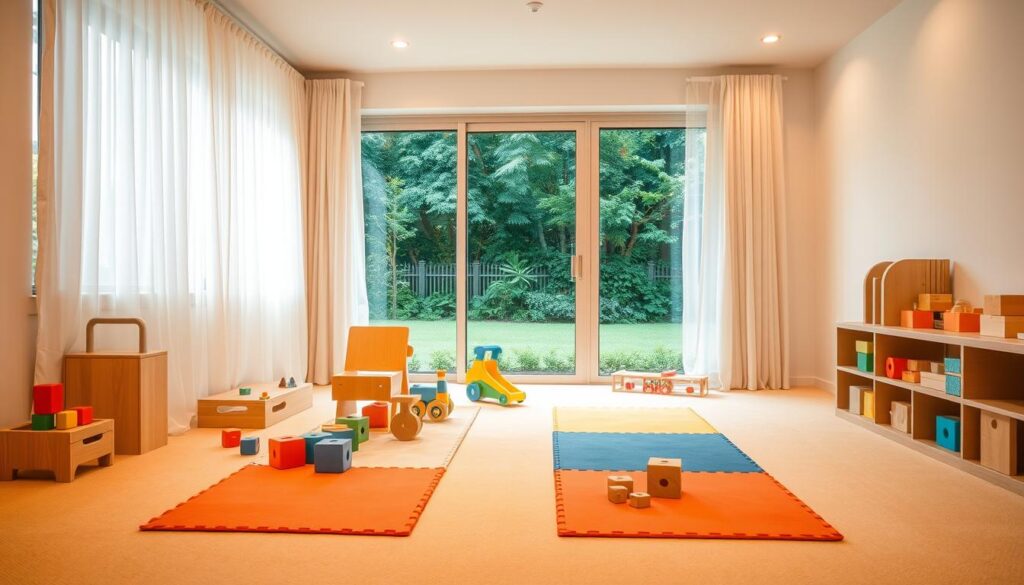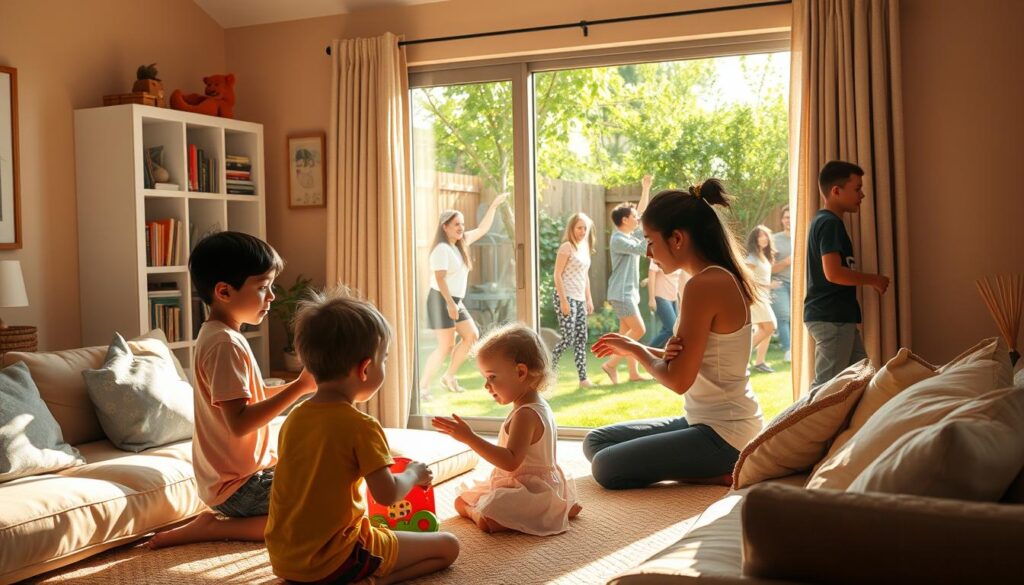
Exploring intimacy with a partner can be exciting, but it’s crucial to prioritize mutual respect. Whether introducing new elements into relationships or experimenting with pleasure products, clear communication lays the foundation for trust. This guide focuses on creating safe, enjoyable experiences that honor everyone’s boundaries.
Consent isn’t just a checkbox—it’s an ongoing conversation. In playful settings, assumptions can lead to discomfort or harm. That’s why discussing preferences openly ensures both partners feel heard. Think of it as teamwork: aligning expectations strengthens connections.
Missteps often happen when enthusiasm replaces explicit agreement. For example, surprise introductions of products without prior dialogue risk crossing personal limits. Our approach emphasizes education and empowerment, helping couples navigate these conversations confidently.
Key Takeaways
- Explicit permission is non-negotiable for all activities
- Revisit boundaries regularly as preferences evolve
- Assumptions undermine trust—always ask first
- Use “yes/no/maybe” frameworks to clarify comfort levels
- Empowerment comes from mutual understanding
Up next, we’ll break down practical steps for initiating these talks. From playful icebreakers to handling hesitation, our methods keep respect at the forefront. Let’s build intimacy the right way—together.
Foundations of Consent in Intimate Play
Mutual understanding transforms intimate experiences into safe, shared journeys. At its core, this means replacing guesswork with clarity. Let’s explore how intentional dialogue builds trust.
Defining Explicit Consent Versus Assumed Consent
Explicit permission leaves no room for interpretation. It’s a direct “yes” to specific actions. Assumed permission, however, relies on past interactions or body language—a risky approach.
Why is assumption dangerous? People’s comfort levels shift daily. A previous “yes” doesn’t guarantee current enthusiasm. We recommend phrases like, “Is this still okay?” to confirm ongoing agreement.
Understanding the Importance of Ongoing Communication
Check-ins shouldn’t feel like interviews. Try weaving them naturally into moments: “How does this pressure feel?” or “Want to try something new?” These low-pressure questions maintain connection while respecting boundaries.
Research shows that regular conversations reduce misunderstandings. One study found couples who discuss preferences weekly report higher satisfaction. Make these talks part of your routine—like a shared ritual.
Here’s a practical way to start: Create a “desire list” together. Compare interests privately first, then share highlights. This method builds excitement while ensuring alignment.
Overview of Toy Play and Safety
Exploring new dimensions of intimacy requires thoughtful preparation and trust. When introducing novel elements into shared experiences, prioritizing security transforms curiosity into confident exploration. Let’s discuss how to blend excitement with responsibility.

Safe Introduction of New Sex Toys
Start by researching options together. Browse reputable stores or read reviews as a team. This collaborative approach builds anticipation while addressing questions early.
Always inspect materials before use. Silicone and glass are popular for their non-porous surfaces. Avoid sharing products unless they’re thoroughly sterilized. One partner’s sensitivity could become another’s discomfort.
“Education removes fear—knowledge turns ‘scary’ into ‘exciting’.”
Establishing a Comfortable Environment for Exploration
Lighting, privacy, and mood matter. Dim lamps or soft music can ease nerves. Keep lubricants and cleaning supplies within reach to minimize interruptions.
Create a feedback system. Try a 1-5 scale for pressure preferences. This makes communication playful yet precise. Remember: laughter dissolves tension better than silence.
| Material | Cleaning Method | Safety Tip |
|---|---|---|
| Silicone | Boil for 3 mins | Check for tears |
| Glass | Warm soapy water | Avoid drops |
| Plastic | Toy cleaner spray | Replace annually |
Curiosity thrives in judgment-free zones. If something feels odd, pause and discuss. Mutual respect turns experimentation into connection-building activity. After all, discovery should feel like teamwork, not a solo mission.
Communicating Boundaries and Negotiating Desires
Building trust in relationships starts with clear conversations about what feels right. When exploring shared experiences, silence often creates more confusion than clarity. Let’s unpack how intentional dialogue turns uncertainty into teamwork.
Open Dialogue About Limits and Preferences
Start by naming preferences before excitement takes over. Phrases like “I’d enjoy trying…” or “Let’s talk about…” invite collaboration. This prevents misunderstandings that could lead to discomfort.
Watch for nonverbal cues too. Averted eyes or tense shoulders might signal hesitation. Pause and ask: “Want to adjust anything?” Simple check-ins keep both partners aligned.
“Assumption is the enemy of safety—always verify enthusiasm.”
Techniques for Effective Partner Discussions
Create a “green light” system. Share three interests: one you’re eager to try, one you’re curious about, and one that’s off-limits. Comparing lists builds mutual understanding without pressure.
Schedule regular check-ins. Weekly five-minute chats help track evolving comfort levels. Research shows couples who practice this report fewer issues around unexpected surprises.
Remember: every act requires fresh agreement. Past enthusiasm doesn’t guarantee current interest. Phrases like “Is this still okay?” reinforce respect while deepening connection.
Empowering Intimacy with Consent and Sex Toys
Shared exploration can deepen connections when approached thoughtfully. Integrating new elements into physical closeness requires collaborative planning—where excitement meets mutual care. Let’s explore how couples create fulfilling adventures while honoring each other’s comfort.
Best Practices for Introducing Toys into the Relationship
Start with curiosity, not assumptions. Browse options together, discussing what sparks interest. One couple shared how comparing wishlists helped them discover shared preferences they hadn’t considered before.
- Research materials and safety features as a team
- Set ground rules for storage and cleaning routines
- Schedule a “test run” without pressure to perform
How We Ensure Consent Every Step of the Way
Continuous agreement turns novelty into trust-building moments. A recent survey found 78% of couples felt closer after establishing check-in habits during play. Try these approaches:
- Pause halfway to ask: “How does this feel now?”
- Use color cards (green/yellow/red) for real-time feedback
- Debrief afterward: “What would we adjust next time?”
“Our weekly ‘innovation chats’ made trying new things feel like a joint project, not a demand.”
Friendship circles can normalize these conversations. Many partners find group discussions with trusted peers reduce hesitation. Remember: your shared journey deserves its own rhythm—there’s no universal script.
Addressing Myths and Misconceptions in Toy Play
Myths about intimacy tools can create harmful situations if left unchallenged. Let’s unpack dangerous assumptions that persist in relationships and online spaces.
Why “Surprises” Aren’t Romantic
Many believe unplanned gifts show spontaneity. However, introducing items without discussion removes a partner’s choice. A 2023 study found 62% of participants felt violated by unexpected intimacy tools.
Legal experts warn that unwanted acts could meet assault definitions in some states. Always ask first—silence isn’t approval. Feminist workshops teach the “Three Check Rule”: confirm interest before, during, and after exploration.
| Myth | Fact | Risk Level |
|---|---|---|
| “They’ll love the surprise!” | 73% prefer prior conversations | High |
| “No protest means yes” | Freeze responses mimic consent | Critical |
| “Once agreed, always okay” | Preferences change daily | Moderate |
“Power imbalances thrive on unspoken rules. Clear dialogue protects everyone.”
Online forums reveal real stories. One user shared how a partner’s “gift” caused lasting trust issues. Others emphasize checking reputable websites for safety guides.
Key takeaway? Myths crumble when replaced with questions. Try: “How do you feel about trying something new?” This simple phrase builds bridges, not barriers.
Learning from Real-Life Scenarios
Real stories teach us what textbooks can’t—how everyday choices shape our closest bonds. Let’s explore both cautionary tales and success stories that highlight growth through mindful partnership.

Case Studies: When Communication Failed
A 2022 University of Michigan study tracked 200 couples exploring new activities. One pair introduced bedroom products without discussing preferences first. The recipient froze, later reporting lasting discomfort. Researchers noted how rushed enthusiasm overshadowed basic check-ins.
Another example comes from LGBTQ+ advocacy groups. Partners misinterpreted adjusted clothing as interest escalation. Without verbal confirmation, the moment turned stressful. “We assumed body language spoke clearly,” one participant shared. “Now we ask directly.”
Positive Experiences from Shared Decision-Making
Contrast this with a couple who created “innovation nights.” They alternate suggesting ideas, then vote using emoji cards. Their monthly ritual led to 40% higher satisfaction scores in intimacy surveys.
Consider this table comparing approaches:
| Action | Negative Outcome | Positive Alternative |
|---|---|---|
| Unplanned toy use | Trust erosion | Joint product research |
| Ignoring tense posture | Emotional distance | “Want to pause?” question |
| Silent assumption | Misread desires | Weekly preference chats |
“Our ‘redo button’ rule changed everything. If something feels off, we literally say ‘rewind’ and adjust.”
Small habits make big differences. One partner’s quizzical eyebrow raise became their signal to check-in. Others use codewords like “traffic lights” during moments. Laughter often follows, keeping connections light yet intentional.
Tips for Safe and Enjoyable Experimentation
Turning curiosity into connection starts with teamwork. Whether you’re new to pleasure products or expanding your collection, collaborative planning keeps excitement aligned with care. Let’s explore how small habits create big rewards.
Practical Guidelines for Incorporating New Toys
Begin by creating a shared checklist. Discuss materials, size preferences, and safety features. Many couples find browsing beginner-friendly options together reduces nerves while building anticipation.
Schedule dedicated research time. Compare reviews or visit stores as a duo. This process helps identify overlapping interests while addressing concerns upfront. One partner might prioritize quiet vibrations, while another seeks adjustable settings—alignment matters.
Strategies to Enhance Pleasure Through Consent
Design a “pause protocol” before starting. Agree on hand signals or safe words for real-time adjustments. Feminist workshops recommend phrases like “Scale of 1-10?” to gauge comfort without breaking momentum.
Post-activity debriefs strengthen future experiences. Ask: “What felt amazing?” or “Any tweaks for next time?” These reflections turn experimentation into growth opportunities. For those nervous about trying something new, starting with non-intimate settings (like discussing over coffee) eases pressure.
“Shared decision-making transforms vulnerability into strength—it’s the ultimate trust exercise.”
Conclusion
Healthy connections thrive when both partners feel empowered. Our journey through mutual respect shows how clear dialogue transforms curiosity into confident discovery. By prioritizing check-ins and enthusiasm checks, couples create spaces where excitement meets security.
Every shared experience grows stronger with teamwork. Simple habits—like discussing new ideas over coffee or using color-coded feedback—turn potential stress into bonding moments. Research confirms that couples who plan adventures together report deeper satisfaction in their relationships.
Remember: safety and joy walk hand-in-hand. Whether testing innovative products or revisiting favorites, mutual agreement remains essential. Keep conversations light but intentional—laughter often paves the way for breakthroughs.
Let’s carry these lessons beyond the bedroom. Normalizing open discussions about comfort levels strengthens all relationships. Together, we can redefine exploration as collaborative play where everyone’s voice shapes the adventure.

